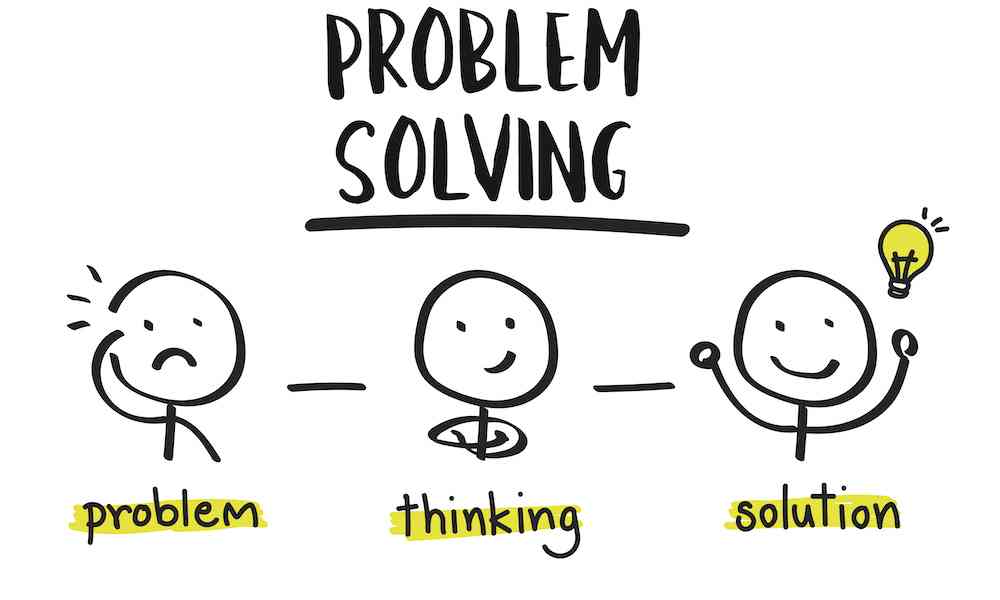An engaging and well-crafted pitch deck is a game-changer for any startup aiming to make a lasting impression. It’s not just a tool—it’s your golden ticket to securing investor confidence, building partnerships, and capturing customer interest. A powerful pitch deck showcases your company’s unique value, proves your concept’s viability, and illustrates exactly how you outshine the competition. In this guide, we’ll explore the essential components of creating a pitch deck that not only tells your story but convinces stakeholders that your startup is destined for success.
What is a Startup Pitch Deck?
The importance of a pitch deck for startups
To effectively outline your pitch deck, it’s important to think like an investor. What key pieces of information do you need before investing in a company? The best way to learn how to create a persuasive pitch deck is to research the best pitch decks from companies like Uber, Facebook, and Tesla. Examining what works will give you a better understanding of how to create a deck that stands out from the crowd. A pitch deck is designed to communicate your startup’s strengths quickly and concisely. Don’t overwhelm your audience with jargon or extra details. Your pitch deck should also include the most important information about your idea, your team, and the potential market opportunity for growth.
A winning deck will always include the following elements:
- Your Solution Market Problem and Opportunity and Why You Are Better Than Your Competitors Why Your Company Is Worth Investing In
- Market Problems and Opportunities
- Your solution and why you are better than your competitors
- Why your company is worth investing in
Investors and prospects see your presentation as a first impression of your business.
A great slide deck can convince investors that your product has the potential to be successful. This requires building an emotional connection with prospects and partners with a clean, unified message.
8 Key Components of a Successful Pitch Deck
There are several key components to include in your deck. A good starting point is to follow the Lean Canvas model to ensure you cover the problem, solution, key metrics, and competitive advantage in three main slides. A complete 10- to 20-page deck should include the following eight key components:
- problem
- way out
- market opportunity
- your business model
- competition
- team
- financial forecast
- Funding Request
And remember, your pitch deck will evolve as your company matures and moves from seed funding to Series A, B, and C funding rounds.
1. Problems

Sumber img : kompasiana.com
Start by highlighting the problem in a clear and compelling way. Create a clear narrative that resonates with your audience and creates a relatable moment. The problem statement should create tension in the market with a quick solution. When writing your problem statement, you should focus on the side effects that could occur if it is not resolved. Make your argument focused, specific, and direct. You should emphasize the urgency of the problem and try to generate empathy through personal connection.
2. Solution

Sumber img : kompasiana.com
Take the time to write your solution description properly. The shorter and simpler your edit, the more memorable it will be to investors. Often, founders are too close to their product to focus on one core value proposition. In this case, step away from the details and focus on what will satisfy your customers the most. When finished, your solution should be as short as one sentence. Your value proposition should be clear and concise enough to fit on one slide. Don’t forget to tie your solution directly to the problem you’re solving. Otherwise, offering too many solutions can quickly make the solution seem misaligned and uninvestable.
3. Market Opportunities

Sumber img : kompasiana.com
Before diving in, it’s important to show that there is a path to profitability. Investors want to quickly understand the scale of the problem and the market potential. Set the stage by developing three key people who make up a larger market segment. Each brings a unique perspective to your product. To accomplish this, create a slide show about the market size and opportunity. Match your market to your product. If you’re focused on a direct-to-consumer model, include demographics including income, location, and age. For B2B companies, focus on market size through key metrics such as business size, potential market capitalization, location, or potential for consolidation.
4. Business model
After presenting the problem, solution, and adaptation, show your audience how you will implement the idea. This is where you start to get investors. Clarify your business model by sharing:
- Business Structure Pricing Model Gross Revenue Profit Margin Marketing and Sales Plan
- business structure
- total income
- pricing model
- profit margin
- Marketing and Sales Plan
Once you have all of these aspects figured out, you should be ready to determine how you will achieve and maintain your forecast. If your business is in the pre-revenue or idea stage, include a compelling forecast and a clear competitor model that highlights how your product will grow in the market. Remember, angel investors and venture capitalists want to invest in businesses they know will succeed.
5. Competitive analysis
When it comes to competition, it’s important to show that there’s no one else like you. An effective way to do this is to go back to the problem statement and remind your audience that there is a better solution. This part of your presentation is one of the most important. Understanding your competition is just as important as understanding your product and customers. It’s important to do a thorough competitive analysis to show that you know your market and have the potential to stay ahead of your competitors. The Gartner Magic Quadrant is the gold standard for tech startups looking to impress investors. Use the grid format to categorize players into leaders, visionaries, challengers, and niche players. No matter where you fall in the quadrant, it’s important to use numbers and facts to show that you know your market and are a market leader.
6.Team
Once you’ve defined the competitive landscape of your market, introducing your team can be a great way to support their track record of success. Showcase the strengths and successes you bring to your team, investors, customers, or partners. A track record of success always makes fundraising easier. Please include the following details to verify your expertise:
- Founder’s background and work history Team expertise and core skills Total years of experience Management and business skills
- Background and career of the founder
- Subject matter expertise and team core skills
- Total years of experience
- Management and Business Skills
Let’s be honest: Mark Zuckerburg was just a name before he became successful. Whether you’re already a successful entrepreneur or not, don’t be afraid to believe in yourself and do your best. Find a way to encourage investors to invest in you over others by showing that you’re the best expert in your niche.
7. Financial Forecast
Experienced investors want to make sure that founders understand the market and their product. In fact, investors often use forecasts to determine whether a founder understands the market and the numbers well enough to be worth investing in. When creating a forecast, you need to show how your business model will work. A useful approach is to have a hierarchical model for predictions. Start by sharing your financial history so far. Then simply include your monthly revenue, gross profit, and net profit. Always be prepared to mention metrics that support your assumptions and may cause pause. When creating projections, it’s important to shoot for a runway three to five years out. This gives investors enough time to see potential short-term gains and gain perspective on how the business will perform in the long term.
8. Funding Request
The funding request is the point in your pitch where you need to bring all the pieces together into one compelling ask. Present your funding request with clear, precise numbers. You should be able to detail exactly how you arrived at the valuation you’re asking for, how it will support the business, and what results the capital injection will provide. Detail how your investment will reach key milestones. It’s also important to include details about product development, breakeven, and revenue potential. Many entrepreneurs think their role is to convince investors to buy their business. Try a different angle by showing the money, vision, and accomplishments you’ll miss out on if you don’t invest in the company. After all, you’re most likely looking for a strategic partner, not just a capital injection.
Tips for creating effective presentation materials
The key to a winning deck is to focus on telling a story in four to five slides. Most founders may find this impossible due to their proximity to their product. A useful tool for refining your deck is to open it up to critique. Feedback forums like Founders Network Pitch Practice events allow entrepreneurs to get direct feedback on their pitches and on investors’ startup pitches. This may include advice on how to create and structure your deck, how to choose the right visuals and graphics, and how to communicate your message effectively.
Another tool is to do your research. Look for tools like pre-designed decks or design services like Slidebean or UnicornPitch to help entrepreneurs complete their decks. These even allow founders to create pitch decks in as little as a day. As you build your deck, you can also incorporate tracking mechanisms to refine the slides and presentations you’re viewing and determine the best process for following up on requests. Keep the basics in mind throughout the process. Keep it simple, make it memorable, and include a clear call to action. Keep your design clean and avoid jargon in your text. Always review your deck to make sure it contains the eight key components of a killer pitch deck listed above.
Pitch Deck Best Practices
If you take the time to look at presentations from some of the biggest companies, you’ll find a few key features that make their presentations stand out. Typically, these include compelling graphics and images, compelling problems and solutions, and a clear interest in the product. Some of the best visual best practices include:
- Maintain brand consistency using high-quality images A clear color palette Consistent text sizes (no typos!) A clear, unified voice
- Keep your branding consistent by using high-quality images.
- defined color palette
- Consistent text size (no typos!)
- Clear and unified sound
It’s also important to remember the little details. For example, always send your presentation deck as a PDF to ensure formatting consistency. And don’t forget to add a copyright.
Often presentation materials are transmitted digitally. To ensure your deck is personalized, write a short personalized message to each investor who shares your deck. Offer them the opportunity to demo or test your product for free and show them that there is a ready market for your product. Some entrepreneurs will choose to hire a company to help with their initial preparation and publicity, which can pay off in the long run. Whether you outsource or keep development in-house, you should review your materials monthly for consistency.
What to Avoid
At the same time, as you look through the various promotional materials and investor materials, you will find some tactics and approaches that are lacking. Here is a short but comprehensive list of things to avoid:
- Don’t make your pitch deck longer than 20 slides. Less is often more. Don’t insult your competition. You never know who might be in the room. Avoid giving excessive financial details as these may be given as a follow-up. Don’t try to cover everything in your pitch deck. Your pitch deck should be what gets you into the room to make your pitch. Avoid using a lot of jargon or abbreviations. Always aim for simplicity. Avoid poor layout, low-quality graphics, or pixelated images. Hiring a graphic designer to polish your deck could be the difference between closing a deal or not.
- Don’t make your short presentation more than 20 slides. Less is often more.
- Don’t insult your competitors. You never know who might be in the room.
- Avoid providing excessive financial details as these may be provided as a follow-up.
- Don’t try to cover everything in your pitch deck. Your pitch deck should be something that gets you into the room to deliver your pitch.
- Avoid using a lot of jargon or abbreviations. Always aim for simplicity.
- Avoid bad layouts, low-quality graphics, or pixelated images. Hiring a graphic designer to polish your deck could be the difference between closing a deal or not.
With any deck, there are always areas for improvement. Investors review hundreds of decks every month. In fact, a recent study found that potential investors spend about 3 minutes and 44 seconds looking at pitch decks when no pitch deck is presented. Strive for greatness and remember. When you pitch to investors, your deck may be one of 30 decks they see that week. Make sure you stand out.
3 success story presentations from successful startups
You may have found your favorite pitch deck, but so have we. Below you’ll find a list of three companies that were able to secure funding from investors at the Seed, Angel, and VC stages through their pitch decks.
Uber
Uber is a leading tech giant known for creating the on-demand ride-sharing service. Their initial pitch in 2008 was a success by offering a quicker and easier alternative to taxis. Their offering quickly addressed a gap in the market by providing consumers with a ‘one-click’ call solution. Even more powerful, it is a clean, clear and persuasive way to easily detail your content using less than 100 words per slide.
Airbnb
In 2009, Airbnb, a leader in short-term home rentals, raised $600,000 from Sequoia Capital and Y Ventures using a minimalist pitch deck. Their methodology was clear. It meant using visual elements, not words, to tell your story. As a company with active users when we pitched, we made good use of testimonials, press, and product demos to show proof of concept for our designs.
dropbox
DropBox, a cloud storage platform, raised a small $15,000 venture capital investment to build a pitch deck that quickly grew it into a $16 billion company. The pitch deck covers the eight key elements of a successful pitch deck and is artfully presented with a featured leaderboard to help you easily establish yourself as a leader over your competitors. While the pitch isn’t as eye-catching as Uber or Airbnb, DropBox understands that less is more, using large fonts and fewer words.
You can explore additional successful deck lists from TechCrunch, Piktochart, and CirrusInsight.
Startup Pitch Deck FAQs
Ready to start your presentation deck? If so, check out our FAQ and see if you’re ready to get started.
How much does it cost to create a pitch deck?
Creating a pitch deck is free. Regardless, it’s important to invest the time and energy to do it right. Some investors may hire an experienced designer to trim their deck for up to $4,000. You can also work with a communicator and designer, which can cost up to $10,000. It’s also a good idea to attend events like Founders Network Pitch Practice and Office Hours events to get direct feedback from investors.
How many slides does a startup pitch deck have?
Your startup pitch deck or investor deck should have 10 to 20 slides.
How do you put together a pitch deck?
Your pitch deck should consist of 10 to 20 slides containing the following eight components:
- problem
- way out
- Target Market and Opportunities
- your business model
- competition
- team
- financial forecast
- Funding Request
You can find other similar models for pitch decks. As long as you meet the above, your deck has all the essential ingredients for success.
Does your pitch deck include financial information?
You should always include financial details that help explain your success. Financial data should include expenses, revenue/income, KPIs, and key forecasts. Find out the numbers investors want to see most here.
What legal disclaimers should you include in your startup pitch deck?
The purpose of a pitch deck is to inform investors about your product. Your presentation should contain factual information. There is no need to include legal disclaimers in your pitch deck. However, please mention whether your product is copyrighted, patented, or trademarked.
What’s in an Idea Stage Startup Pitch Deck?
An idea stage startup pitch deck is similar to any other pitch deck. Your presentation should include:
- Problem: Describe the problem your company solves. Solution: Solution Market Opportunity: Business Model Competitive Analysis: Value Proposition Roadmap: Proof of Concept through Case Studies and Examples Team: Founders and Investors Financial Forecast: How we plan to achieve our goals Market Funding Request: Clear numbers that will help us achieve our goals next goal
- Problem: Describe the problem your company solves.
- Solution: Solution
- Market Opportunity: Business Model
- Competitive Analysis: Your Value Proposition
- Roadmap: Proof of Concept with Case Studies and Examples
- Team: Founders and Investors
- Financial Forecast: Plans to Meet the Market
- Funding Request: A clear number that will help you reach your next goal.
What should you not include in your startup pitch?
Startup founders should avoid poorly designed presentation decks with more than 20 slides. Founders often over-explain and use too much jargon in their presentations. The most important thing is not to give your investors, partners, or customers a reason to say no. Don’t show your weaknesses. Highlight your strengths.
What accounting reports do I need for my startup pitch deck?
You will need to prepare five financial documents to share. These may appear as attachments or be requested as a follow-up.
- Balance Sheet Assumptions Statement Income Statement Cash Flow Statement Statement of Shareholders’ Equity
- household sheet
- balance sheet
- income statement
- cash flow statement
- Shareholders Equity Report
Do some research to learn more about the accounting reports you need to prepare.
Are you ready to finalize your pitch deck?
A clear and compelling pitch deck is fundamental to the success of any startup. Founders who create investor pitches that effectively showcase their vision consistently get funded.













